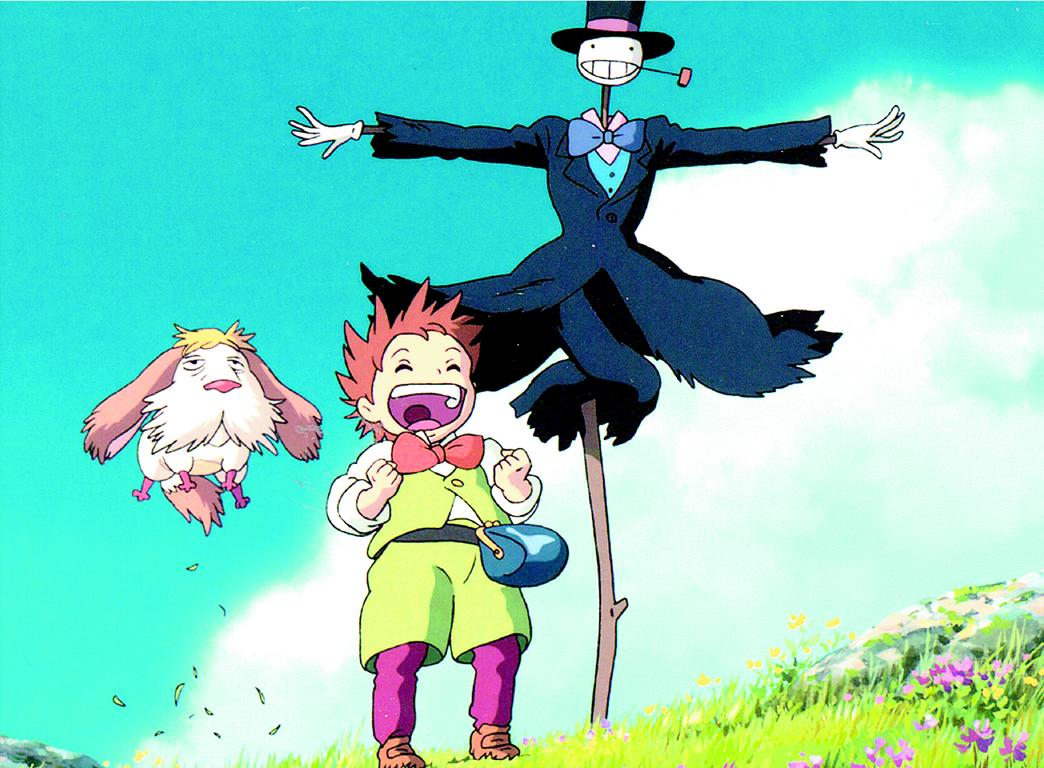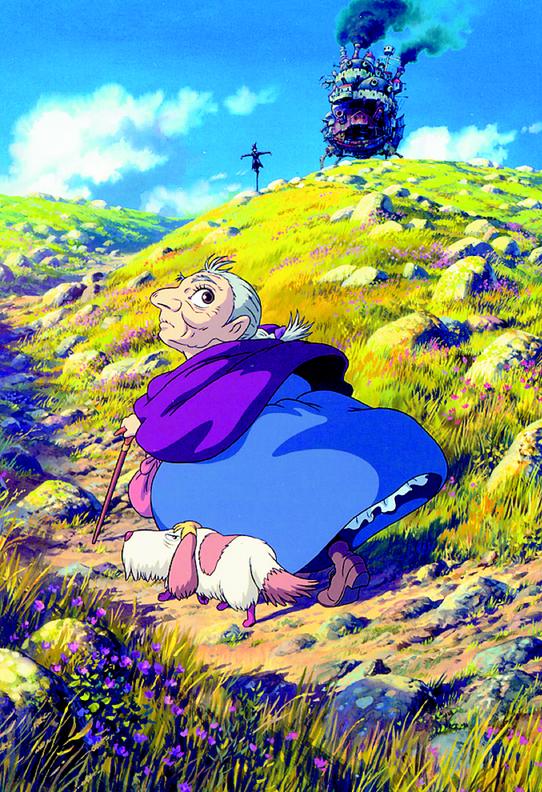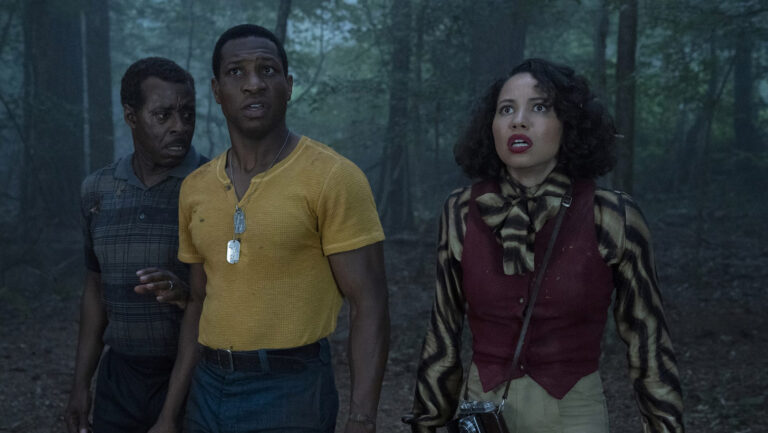A towering figure in the Far East, Miyazaki has been making inroads in America lately thanks–ironically–to the Walt Disney Company. Disney's reverent releasing of Miyazaki material–My Neighbor Totoro, Kiki's Delivery Service, Princess Mononoke, Spirited Away–has introduced the all-ages filmmaker to a whole new audience. While the United States hasn't exactly embraced Miyazaki's creations as closely as Mickey and Donald and all of Uncle Walt's pantheon, there is a growing English-language cult attracted to Miyazaki's imaginative worlds.
Miyazaki's latest work, Howl's Moving Castle, is another Japanese record-breaker making its way to American shores. It's almost a shame that this film won't make a tenth of what Disney's other summer release Herbie: Fully Loaded will rake in. Howl's has the bones of an all-time classic fantasy film.
Like all of Miyazaki's work, the story is simple in plot but complex in nature. Taken from the young adult novel by British fantasist Diana Wynne Jones, Howl's Moving Castle takes us to a fantasy world located just a few degrees off from Industrial Age Europe, where giant, steam-powered tanks stand side-by-side with shapeshifting wizards. Our main character is Sophie (voiced by Emily Mortimer of Notting Hill and Lovely & Amazing), a serious young workaholic who spends all her time running her family's hat shop. One day, Sophie runs afoul of the temperamental Witch of the Waste (voiced by no less than Lauren Bacall), who curses our heroine, turning her into a withered 80-year-old crone (voiced by Spartacus star Jean Simmons).
Determined to break the curse, Sophie wanders out into the misty wastelands looking for the titular dwelling, a massive, robotic chateau inhabited by the legendary wizard Howl. Once inside, Sophie befriends a chatty fire demon named Calcifer (a surprisingly nonannoying Billy Crystal), who has been conscripted to fuel the ambulatory abode. Appointing herself the castle's much-needed cleaning woman, Sophie gets to know the powerful but troubled homeowner (voiced by Batman Begins star Christian Bale) and engages in many startling adventures.
Like a coming-of-age tale told in reverse, the film slowly teaches its heroine to appreciate life, beauty and love above simple duty-bound responsibility. By aging so unnaturally, Sophie gains something more than just the wisdom of maturity. She isn't the only one, either.
The true nature of almost every character in this film is hidden behind some kind of mask, disguise or curse. While Sophie bounces between wise youth and energetic senior, Howl shifts between romantic hunk and monstrous bird. Which side will win out? It's hard to guess, really, because Miyazaki has created such complex characters. Howl is at times beautiful and kind. At other times, he's vain, self-centered and reckless.
All of this character drama is cast against the timely backdrop of a nation on the brink of war. Wizards are being forced to join in the patriotic fight by the king's chief spellcaster Madame Suliman (Blythe Danner, completing a rather impressive trio of grande dames). Torn between his dark, cowardly nature and his brighter humanitarian side, Howl becomes a sort of magical draft dodger.
Visually speaking, this is certainly one of Miyazaki's most beautiful films, one that delights audiences with such wondrous sights as doorways that are capable of opening onto any one of several city street, murderous blobby monsters wearing straw boater hats and helpful turnip-headed scarecrows. The world on display in Howl's Moving Castle is as fully realized as the Land of Oz
There are those who may find Miyazaki's ending a bit too neat and cheerful (especially in the wake of the film's darker war-torn segments). But it is perfectly fitting with his style. While American audiences may prefer to have their clashes between good and evil end with some hideous bad guy exploding in a fireball, Miyazaki's stories are always more about battling the dark nature within ourselves than they are about vanquishing snarling foreigners dressed in black.
It's getting a bit redundant using the word masterpiece in connection with Miyazaki, but in this case it's more than appropriate. Howl's Moving Castle is fantasy at its most fantastic.




